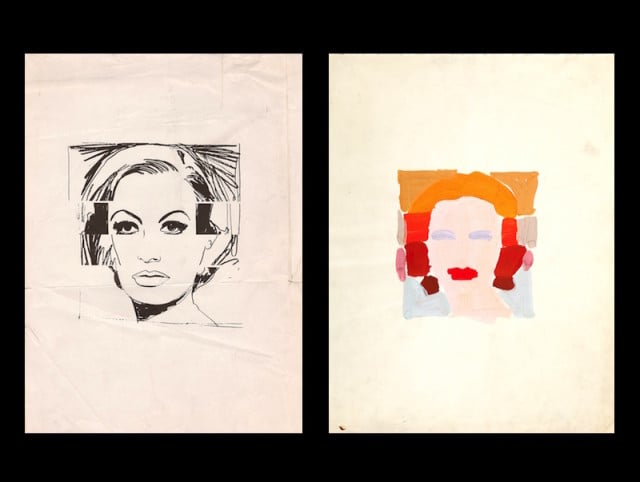Art & Exhibitions
At TIFF, Andy Warhol Aims For Identikit Beauty
THE DAILY PIC: A nod to the Greek painter Zeuxis, or to police portraiture?

THE DAILY PIC: A nod to the Greek painter Zeuxis, or to police portraiture?

Blake Gopnik


(Collection of The Andy Warhol Museum, Pittsburgh, ©The Andy Warhol Foundation for the Visual Arts, Inc.)
THE DAILY PIC (#1453): This is the one great “find” in the show called Andy Warhol: Stars of the Silver Screen, now filling the Toronto International Film Festival’s exhibition spaces. (My last Daily Pic was about its general premise.)
Matt Wrbican, chief archivist at the Andy Warhol Museum in Pittsburgh, has dug out a series of objects that relate to an otherwise unknown project in which Warhol played with building a composite image of the ideal female movie star. (Stylistically, the project resembles various Harper’s Bazaar illustrations Warhol did around 1962, but there’s no record of any magazine commission that relates to it.)
Warhol sliced strips out of photos of various actresses – forehead from Greta Garbo, eyes from Joan Crawford, nose from Marlene Dietrich, mouth from Sophia Loren –and shuffled them to find the perfect recombinant beauty for our times.
Or is she the ideal perpetrator of gorgeousness? The project has a direct echo of the identikit process that police use to reconstruct the faces of criminals. That makes this piece deserve the title of Four Most Wanted Women, in anticipation of the Thirteen Most Wanted Men Warhol started working on just a little bit later.
Warhol is playing on an ancient idea. The Greek painter Zeuxis, faced with having to depict Helen of Troy, is said to have chosen bits and pieces from all the most gorgeous maidens in town, and I’m certain Warhol would have known the tale from the masses of art history he got in grade school, high school and college. He is so consistently radical in his innovation, and so completely modern in his culture, that we don’t always recognize how keen he was to acknowledge his greatest artistic precedents, and then surpass them.
Warhol’s composite image isn’t a casual nod to the Zeuxian story, either, or a sly joke about it. It’s a real attempt to try the approach on for size: Various studies for the project show Warhol carefully working out which star to use for which part of the face. Warhol’s slacker style was always a pose; he cared deeply about every detail that mattered in a piece. (And not at all about details that didn’t, like who applied the paint on a canvas or pulled its silkscreen.)
You could say that Zeuxian recombination is at the heart of Warhol’s entire practice. The color image, at right, seems to be a study for the background hues that Warhol would have laid down before printing the line-drawing on top. (Wrbican has discovered two different printing plates that relate to the project.) It reminds us that almost all of Warhol’s works, from the Campbell’s Soups onward, are built from an inventory of interchangeable parts, according to a set of rules.
That points backward toward medieval ways of working, but also forward to the conceptualism of Sol LeWitt.
It also acknowledges that, bottom line, all of human culture is built on identikit principles.
For a full survey of past Daily Pics visit blakegopnik.com/archive.